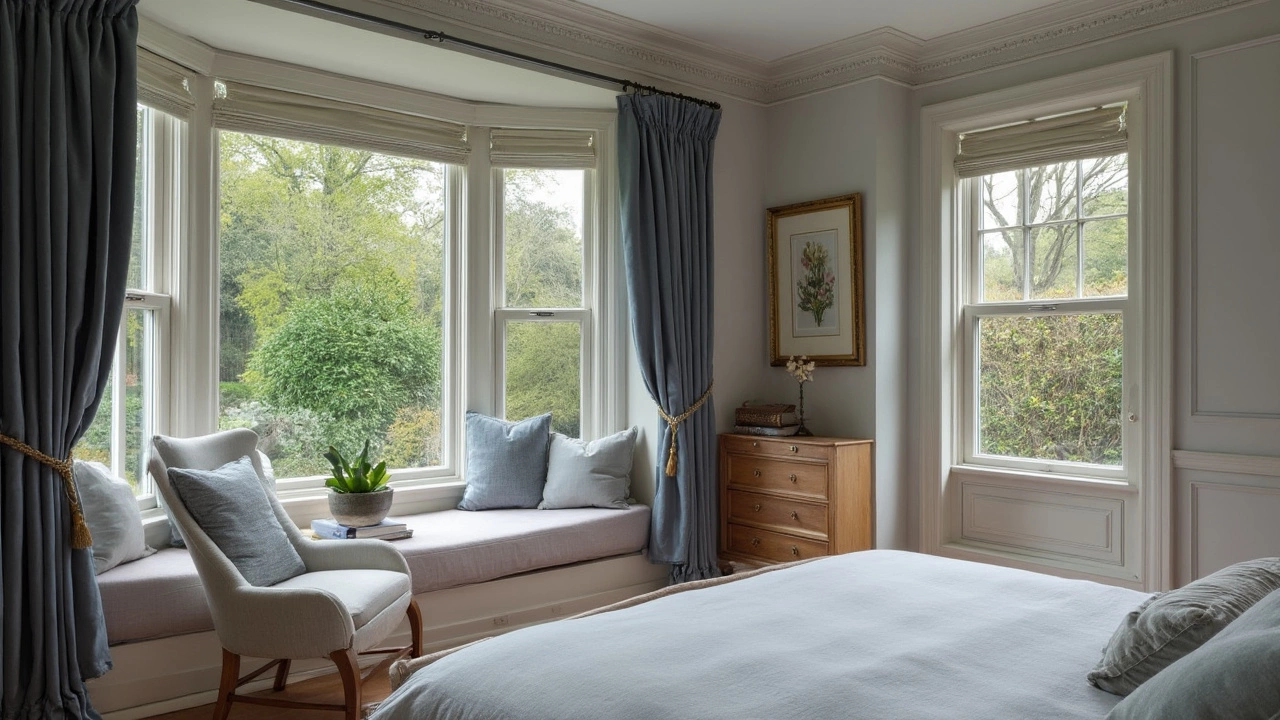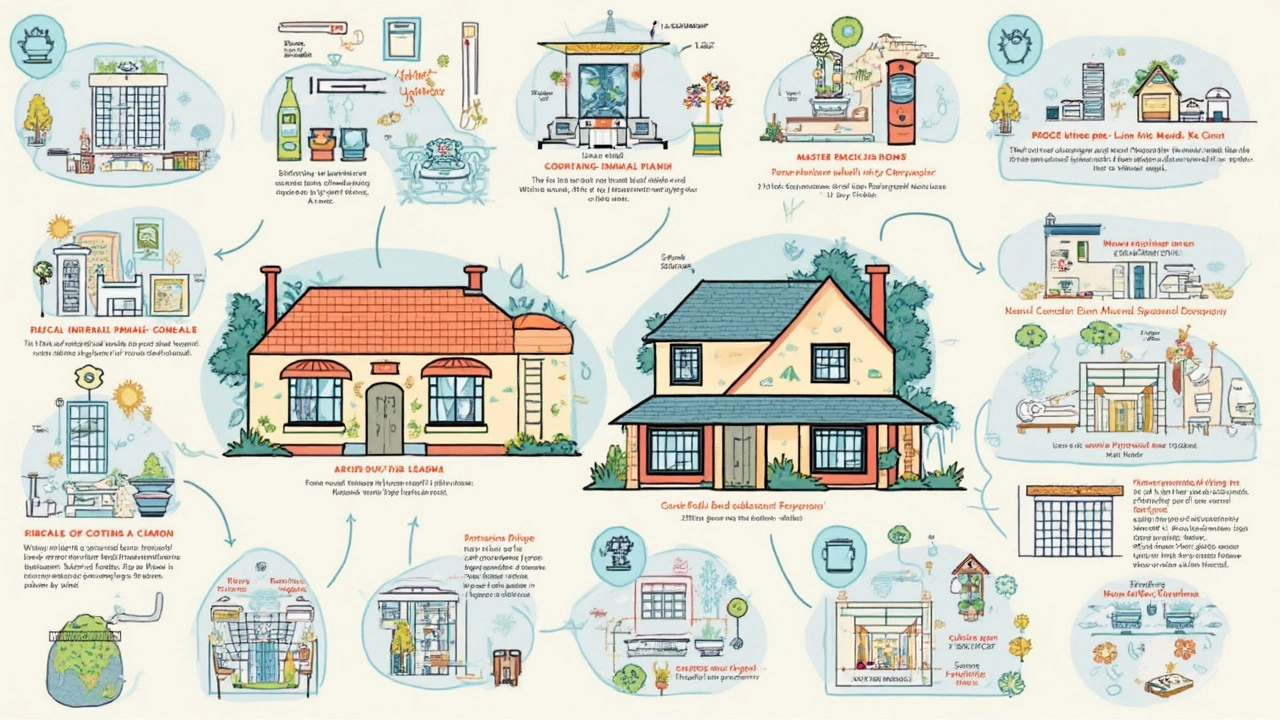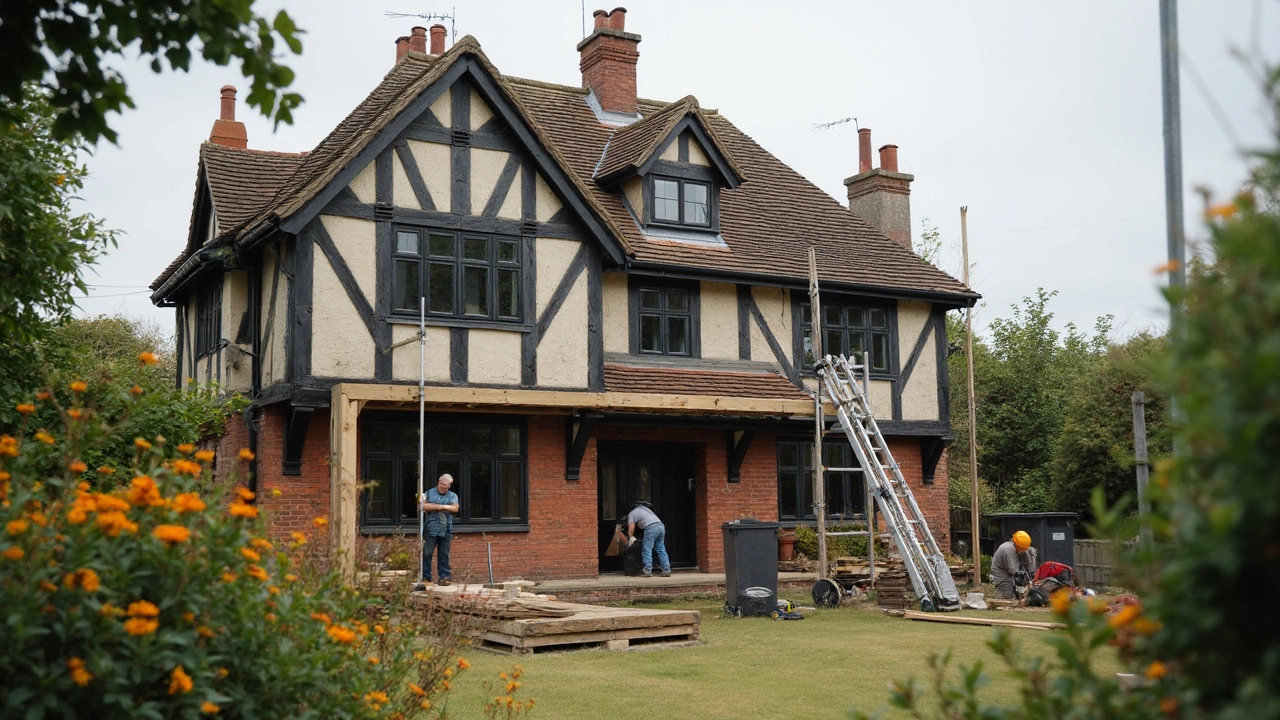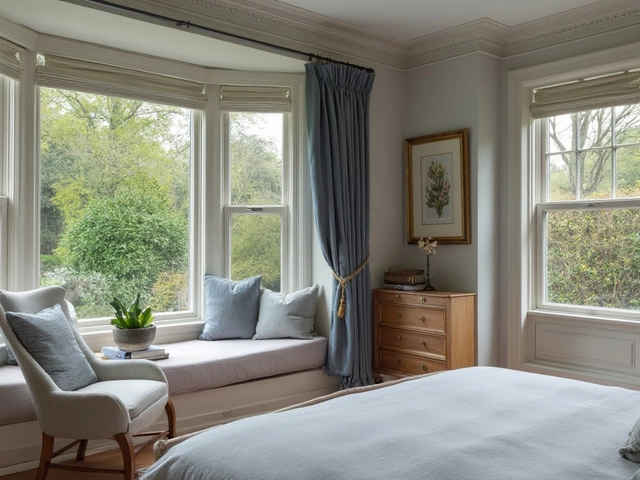Bump Out Master Bedroom Addition Cost: What You Need to Know

So, you're thinking about expanding your master bedroom with a bump out addition? That's a pretty exciting project, but let's get real about the cost. You might be imagining a cozy reading nook or maybe room for that king-size bed you've wanted. Whatever the dream, it's time to talk dollars and sense before knocking down any walls.
First off, what's a bump out anyway? It's a small extension that expands your living space without going for a full-scale addition. Think of it as adding a little flair or function without the hefty price tag of building an entirely new section. But be warned, costs can swing dramatically depending on various factors.
Location matters a ton. For instance, expanding over a concrete slab could be cheaper than working around complex foundations. The size of your bump out is another biggie—the bigger the addition, the more materials and manpower you'll need, naturally hiking the price.
Now, let's not forget materials. Are you dreaming of luxurious hardwood floors and chic fixtures, or is a simple, functional space more your style? Your choices here can impact cost as much, if not more, than the structure itself. And, of course, labor costs are something you'll have to budget for. Depending on where you live, this can be a significant chunk of your expenses.
- Understanding Bump Out Additions
- Factors Affecting Cost
- Budgeting Tips
- Maximizing Space Efficiency
- Handling Permits and Contractors
Understanding Bump Out Additions
You know what they say—sometimes, a little extra space can make a world of difference. A bump out is a handy solution for folks looking to add space without the big commitment of a full-scale renovation. Unlike traditional extensions, bump outs extend out from an existing wall in a minimal way, usually by just a few feet.
So, why choose a bump out? Well, it's all about adding that extra functionality. Perhaps your master bedroom feels a bit cramped, and you're dreaming of more breathing room. A bump out could be a chance to create a cozy reading nook or showcase a stunning window seat. With creative design, even a modest expansion can enhance your lifestyle and home value.
Design Flexibility
One great thing about these additions is flexibility. They can adapt to many uses and styles. Whether your house leans towards modern minimalism or classic cottage charm, a bump out can seamlessly blend in. The key is to work with a designer who understands both your vision and the structural needs of your home.
Cost-Effective Expansion
On the wallet side, think of a bump out as the middle ground. It's not as cheap as repurposing a closet, but it's certainly less of a hit than a full room addition. Expect to save on foundation work and roofing compared to larger projects. Still, plan for expenses beyond construction materials, like design fees and permits.
Planning Permits and Regulations
Before taking a sledgehammer to your wall, make sure you're in the clear legally. Many places require permits for adding a bump out, and ignoring that could lead to fines or forced reconstruction. Check with your local authorities to understand the rules and help the project move forward smoothly.
Factors Affecting Cost
When planning a bump out addition for your master bedroom, several key factors will drive the overall cost. It’s crucial to understand these to budget effectively and avoid surprises down the road.
Size and Scope
The size of the bump out plays a major role. A small addition might simply add a few square feet, while a larger project can significantly increase your living space. Costs typically rise with the increase in square footage due to additional materials and labor required.
Materials Used
Your choice of materials can make or break the budget. For flooring, for instance, opting for hardwood over laminate significantly impacts costs. Similarly, premium windows or custom cabinetry can pile on extra expenses. It's a balance between aesthetics and budget.
Contractor Fees
Labor costs can vary widely depending on where you live. Urban areas often see higher fees due to demand compared to rural settings. Make sure to get multiple quotes and check contractor references to secure the best price-quality match.
Permits and Regulations
A necessary but often forgotten element is the cost of permits. Local government rules might require various inspections and approvals, each with its own fee. It's wise to check these requirements early to include them in your budget.
Geographic Location
The location of your home also affects costs. Coastal areas might incur additional costs due to unique weatherproofing needs. Meanwhile, remote areas might see higher delivery fees for materials.
Additional Features
Including custom features such as built-in storage solutions can add convenience but also increase expenses. Plan these thoughtfully to ensure they enhance your space without overshooting your budget.
| Cost Factor | Potential Impact on Budget |
|---|---|
| Size and Scope | 10-30% increase per 100 sq. ft. |
| Materials | Varies widely; premium options increase costs substantially |
| Contractor Fees | 10-15% increase in urban areas |
| Permits | $500 - $2,000 depending on location |
Knowing and understanding these factors helps in setting a practical budget, ensuring your dream master bedroom bump out doesn't transform into a financial nightmare.

Budgeting Tips
Thinking of adding that bump out for your master bedroom? Let's talk numbers before getting carried away with dream designs. Planning your budget early on can save you headaches later. Here's your guide to keeping it on track.
1. Set a Realistic Budget
Start with the cost of a typical bump out addition, which generally ranges from $15,000 to $25,000 depending on your location and project size. Be sure to factor in the style and fixtures you're after. Know what you can afford and stick to it.
2. Get Multiple Estimates
Before committing to a contractor, get quotes from at least three different professionals. This helps you understand the going rate and ensures you're not overpaying. Compare what each quote covers to avoid surprise costs later on.
3. Allocate for Surprises
It's common to run into unexpected expenses once work starts—hidden mold, wiring problems, you name it. Set aside about 10% to 20% of your budget for these unforeseen costs, so you don't get caught off guard.
4. Prioritize Your Needs
What are your must-haves? Hardwood floors might sound nice, but they're pricey. Decide whether they're essential now or if upgrading later is an option. Prioritize what brings immediate value to your master bedroom.
5. DIY Where Possible
If you're handy, consider tackling parts of the project yourself, like painting or basic carpentry. Save money on labor by doing tasks you feel comfortable with. Just be sure any DIY work meets code requirements.
6. Track Spending
Keep a running tally of expenses to ensure you're staying within budget. It sounds like a basic tip, but it's easy to let costs snowball without realizing it. Use an app or spreadsheet to keep everything organized.
| Expense Item | Estimated Cost |
|---|---|
| Contractor Fees | $8,000 - $12,000 |
| Materials | $4,000 - $7,000 |
| Permits | $500 - $1,500 |
Remember, sticking to these budgeting tips can help your project start on solid financial ground. Expanding your master bedroom should be an exciting adventure, not a stressful ordeal.
Maximizing Space Efficiency
When you're adding a bump out to your master bedroom, making the most of that new space is key. Nobody wants to spend extra just to end up with a space that feels cluttered or underwhelming. Let's get into some straightforward ways to maximize your new addition.
Smart Storage Solutions
Bump outs don't just provide extra room; they offer a chance to rethink storage. Consider built-in shelving or hidden cabinets that utilize vertical space. These can declutter the floor, giving you a cleaner, more open vibe.
Multi-Functional Furniture
Think about furniture that does double duty. A window seat with storage, or a bed with drawers underneath can save space and add style. You don't have to sacrifice design for utility.
Natural Light and Open Views
Big, beautiful windows can transform a room. Not only do they offer great light, but they also make a space feel larger. If privacy is an issue, frosted or textured glass can help.
Effective Layout Planning
Before you dive into the design, think about how you'll actually use the space. Is it for relaxation, work, or a wardrobe upgrade? Plan an efficient layout so the room can meet your needs without wasted space.
Consider a Design Pro
If you're uncertain, hiring a designer might be a good call. They know how to make the most of tight spaces and can offer ideas you might not have considered. A designer can also assist in balancing aesthetics with practicality.
The goal with any master bedroom bump out is not just to add space, but to add space that feels intentional and works seamlessly with the rest of your home. Get creative, be smart about your choices, and this project will be worth every penny!

Handling Permits and Contractors
Alright, before you get too attached to your bump out idea, let's tackle the not-so-glamorous side of things: permits and contractors. This is not the part where you want to cut corners, unless you like surprise visits from building inspectors.
Understanding Permits
First up, permits. Sounds tedious, right? But here's the deal—they're crucial. Many places require you to obtain permits to make sure you're following local building codes, which can cover everything from plumbing to structural safety. If you're caught without them, you might face fines or be forced to undo all that hard work.
The process usually starts with a trip to your local city's building department, or sometimes it can be done online. You'll submit your plans for the bump out and wait for approval. Be prepared for some back-and-forth, as it's not uncommon for initial plans to need adjustments.
Picking the Right Contractor
Next up, finding a good contractor is like searching for the right pair of jeans—it's gotta fit just right. You need someone experienced with additions, not just general home repairs. A great place to start is asking friends or neighbors who’ve survived their own home renovations.
When interviewing potential contractors, come armed with questions. Ask about their experience, request references, and don't shy away from discussing costs upfront. A professional who can provide a detailed breakdown is worth their weight in drywall.
- Check Credentials: Verify licenses and insurance. This is non-negotiable.
- Get It In Writing: Ensure the project details, timeline, and cost estimate are documented.
- Negotiate Terms: Discuss payment schedules but avoid paying the entire bill upfront.
Negotiating Contracts
Once you've picked the right team, it's time to seal the deal with a contract. Make sure it's clear and covers every detail, including timelines, materials, and how changes will be handled. Remember, it's easier to negotiate terms now than to fix problems later.
Handling this side of your master bedroom project might not be as fun as picking paint colors, but it's crucial. Dotting these I's and crossing these T's will save you a lot of headaches down the road, ensuring your bump out goes smoothly and safely.
